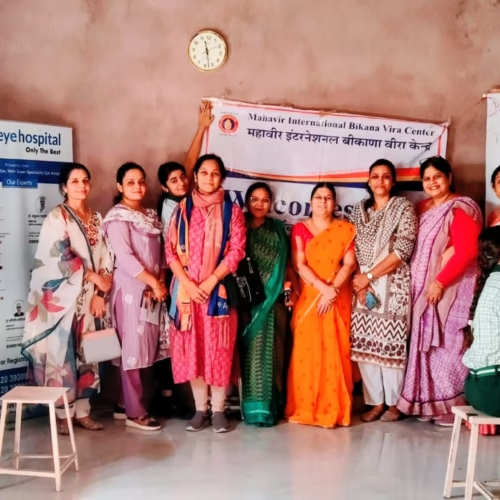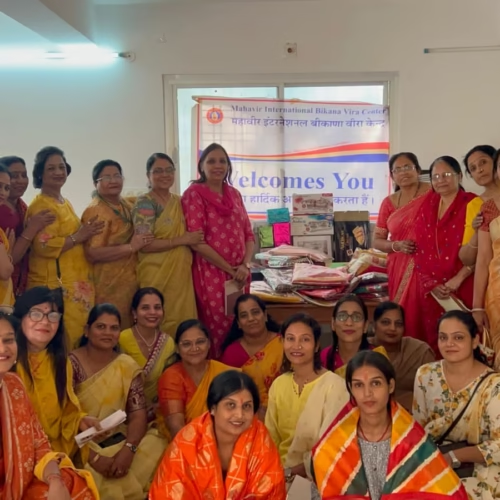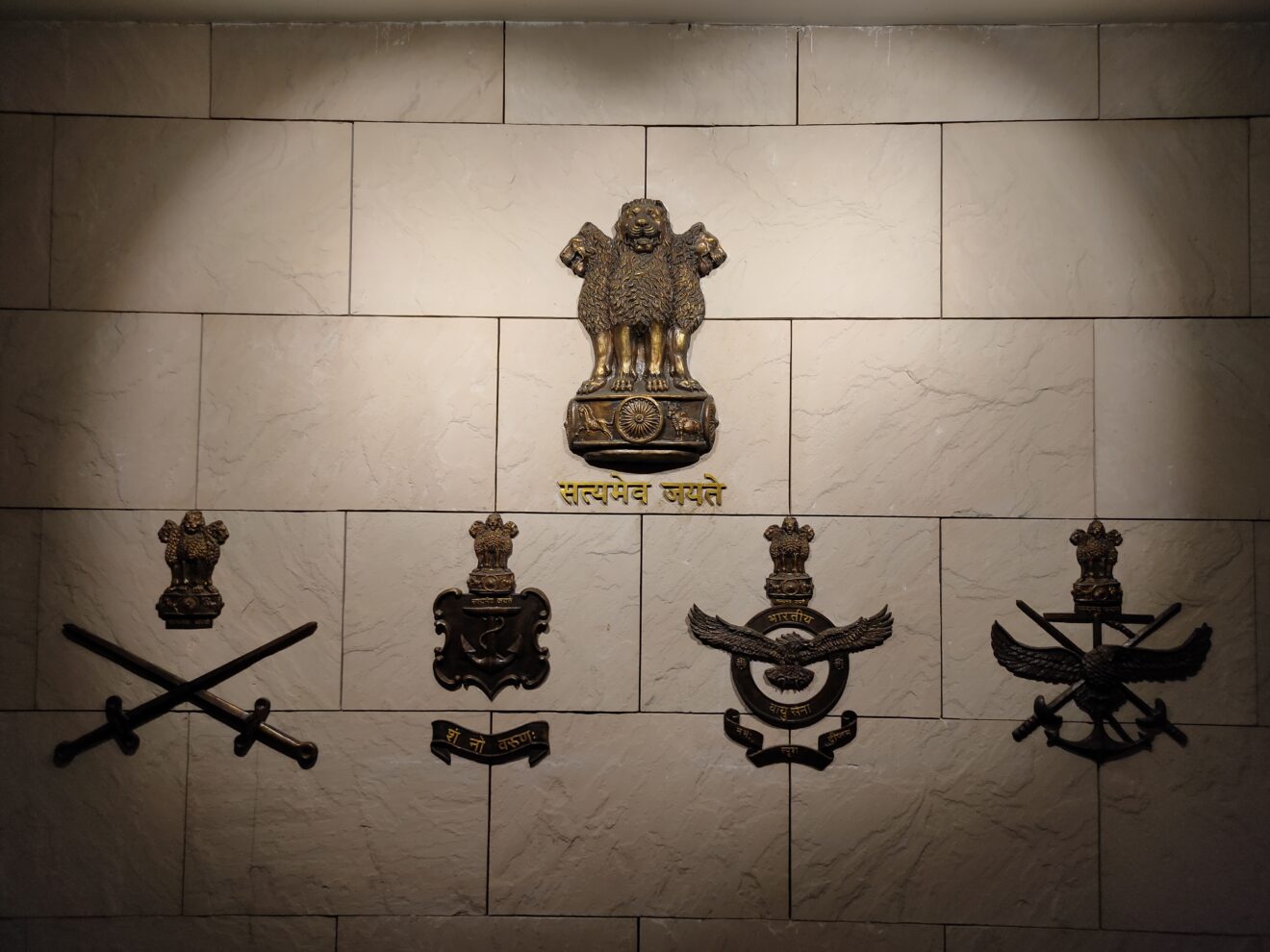BY DEFENCE JOURNALIST SAHIL | T.I.N. NETWORK
Sapta Shakti Command’s Landmark ‘Security Synergy Seminar’ Concludes in Jaipur: Charting India’s Whole-of-Nation Roadmap for Future Conflicts
Jaipur, Tuesday, 11 November 2025:
The two-day Security Synergy Seminar on the theme “A Whole-of-Nation Approach (WoNA) to Counter Future Conflicts” concluded at the Jaipur Military Station under the aegis of Sapta Shakti Command, in collaboration with the Centre for Land Warfare Studies (CLAWS), New Delhi. The high-level seminar, attended by senior military commanders, defence experts, bureaucrats, media professionals, scholars, and students, represented a crucial milestone in India’s evolving national security strategy — where defence preparedness is being redefined as a collective, national responsibility.
The seminar’s closing day witnessed intense deliberations on Information Operations, Cyber Resilience, and Narrative Control — critical pillars of modern hybrid warfare. It emphasised that in the 21st-century battlespace, victory will not only depend on firepower but also on information dominance, cognitive defence, and public unity of purpose.
A National-Level Framework for Information and Cyber Warfare
The first session of Day Two centred on developing an integrated national framework for Information, Cyber, and Influence Operations. Eminent panellists — including senior military officers, domain specialists in cyber warfare, and analysts of social media ecosystems — examined vulnerabilities within India’s information space, discussed emerging global trends, and proposed ways to strengthen the country’s national narrative control mechanisms.
Speakers outlined how modern-day conflicts are being fought not only on battlefields but also in cyberspace and public consciousness. They cautioned that adversaries increasingly deploy “grey-zone tactics” — disinformation, propaganda, and psychological manipulation — to weaken societies from within.
Drawing from real-time case studies, experts elaborated on the weaponisation of information, algorithmic manipulation of social media platforms, and influence operations aimed at eroding public trust. The session also examined the growing role of artificial intelligence in shaping online discourse, warning that automated narrative warfare could be the defining threat of future geopolitical rivalries.
A highlight of the session was the open Q&A segment, where students and young professionals engaged with panellists on how citizens can play a proactive role in countering fake news and preserving national cohesion. Their questions reflected a new generation’s awareness of the strategic significance of truth and digital literacy as tools of national defence.
‘From Concept to Culture’: Building India’s Resilient Security Architecture
The final session of the seminar underscored the urgency of institutionalising Whole-of-Nation principles at both national and state levels. The discussions focused on developing a model framework that could be implemented across states to synchronise military, administrative, and community responses during hybrid or conventional crises.
Senior speakers stressed that the Whole-of-Nation Approach must evolve “from concept to culture, and from coordination to conviction.” This evolution, they said, is vital to protect India’s national interests in an era of multi-domain threats.
A special address by the Air Officer Commanding-in-Chief (AOC-in-C), South Western Air Command, highlighted that India’s security cannot remain confined to its armed forces alone. It must draw strength from governance systems, civil institutions, and citizens alike. The AOC-in-C noted that the Whole-of-Nation Approach is not just a policy model — it is a mindset that must permeate every layer of Indian society, transforming national security into a shared civic duty.
The Rajasthan Case Study: A Model of State-Level Security Resilience
A key highlight of the seminar was a case study on Rajasthan, designed to demonstrate how state-level preparedness can directly strengthen India’s national security apparatus. The case study showcased innovative strategies to build synergy between the military, local administration, police forces, and civilian networks.
It proposed the creation of integrated “Resilience Cells” at the district level, aimed at improving crisis coordination, ensuring rapid communication flow, and fostering citizen participation during emergencies. This decentralised framework, experts argued, could make Rajasthan a national model of hybrid defence preparedness.
The initiative also emphasised leveraging Rajasthan’s technological innovation ecosystem and its industrial base to support India’s Atmanirbhar Bharat defence objectives — merging state capacity with national vision.
Information Warfare and the Future of Conflict
Day Two’s central theme — Information Operations and the Future of Conflict — set the tone for a deeper national debate. Analysts presented evidence of how recent global conflicts have revealed that the information domain can decide outcomes long before physical battles begin.
Speakers examined the dynamics of “perception warfare,” the dangers of algorithmic radicalisation, and the vulnerability of democratic societies to foreign disinformation. They underlined that as India digitalises its economy and governance systems, its information infrastructure must be treated as a strategic asset — to be defended with the same seriousness as territorial borders.
The deliberations concluded that India’s Whole-of-Nation Approach should include an “Information Command” at the institutional level, combining efforts from military intelligence, media regulation, cyber agencies, and civil education bodies to create a unified counter-disinformation framework.
Citizens as Warriors: National Security as a Shared Responsibility
The seminar’s closing session carried a strong symbolic message — that every Indian citizen is a stakeholder in national security. Delegates collectively resolved that India’s safety and stability rest not only on its armed forces but also on the vigilance, awareness, and unity of its people.
Lt Gen Manjinder Singh, Army Commander, South Western Command, reiterated that true national strength arises from synergy — between soldier and citizen, government and industry, technology and policy. He stated that modern threats require “thinking soldiers and informed citizens,” united by a common purpose of safeguarding India’s sovereignty and peace.
The event’s finale echoed this sentiment:
“Every citizen is a warrior, and every institution is a shield. Together, they form the nation’s most powerful armour.”
From Seminar to Strategy: A New National Template
The Security Synergy Seminar did not merely conclude as a conference of ideas — it laid down a conceptual foundation for policy and practice. The recommendations emerging from Jaipur are expected to inform future frameworks on national security coordination, cyber resilience, and civil-military integration.
Experts hailed the initiative by Sapta Shakti Command as an example of how the Indian Army continues to expand its intellectual footprint beyond conventional warfare — into the realms of information security, policy innovation, and community mobilisation.
By turning the idea of Whole-of-Nation Security into a working doctrine, Sapta Shakti Command has once again proven that the strength of India’s defence lies not only in its arsenal, but in its unity — of thought, action, and spirit.
Towards Atmanirbhar and Secure Bharat 2047
The seminar’s closing declaration reaffirmed India’s collective aspiration for Atmanirbhar Bharat and Viksit Bharat 2047 — where national security is built on self-reliance, strategic awareness, and shared responsibility.
It concluded with a resounding pledge that will resonate across India’s military and civil corridors:
“National security is not the duty of one institution; it is the culture of an entire nation.”
With Jaipur’s seminar setting the intellectual direction for India’s next generation of security frameworks, the Whole-of-Nation Approach is no longer an abstract idea — it is now a living doctrine guiding India’s journey towards a secure, resilient, and united future.
BY DEFENCE JOURNALIST SAHIL | T.I.N. NETWORK
सप्त शक्ति कमान का ‘सुरक्षा समन्वय सेमिनार’ जयपुर में सम्पन्न — भविष्य के संघर्षों से निपटने के लिए भारत ने तैयार किया ‘Whole-of-Nation’ सुरक्षा रोडमैप
जयपुर, मंगलवार, 11 नवंबर 2025:
भारतीय थलसेना की सप्त शक्ति कमान के तत्वावधान में आयोजित दो दिवसीय “सुरक्षा समन्वय सेमिनार” (Security Synergy Seminar) का समापन जयपुर सैन्य स्टेशन पर हुआ। इस वर्ष का विषय था — “भविष्य के संघर्षों का सामना करने हेतु Whole-of-Nation Approach (WoNA)”।
यह सेमिनार सेंटर फॉर लैंड वॉरफेयर स्टडीज़ (CLAWS), नई दिल्ली के सहयोग से आयोजित किया गया, जिसमें वरिष्ठ सैन्य अधिकारी, रक्षा विशेषज्ञ, नीति निर्माता, मीडिया प्रतिनिधि, विद्वान और छात्र शामिल हुए। इस मंच ने भारत की बदलती राष्ट्रीय सुरक्षा अवधारणा को एक नए आयाम में परिभाषित किया — जहाँ रक्षा तैयारियाँ केवल सेनाओं तक सीमित नहीं, बल्कि पूरे राष्ट्र की सामूहिक जिम्मेदारी बन चुकी हैं।
समापन दिवस पर सूचना युद्ध, साइबर सुरक्षा और नैरेटिव नियंत्रण जैसे आधुनिक हाइब्रिड वॉरफेयर के प्रमुख स्तंभों पर गंभीर विचार-विमर्श हुआ। वक्ताओं ने यह रेखांकित किया कि 21वीं सदी के युद्धक्षेत्र में विजय केवल हथियारों से नहीं, बल्कि सूचना प्रभुत्व, वैचारिक रक्षा और राष्ट्रीय एकजुटता से तय होगी।
सूचना एवं साइबर युद्ध के लिए राष्ट्रीय ढांचे की रूपरेखा
सेमिनार के दूसरे दिन के पहले सत्र में सूचना, साइबर और प्रभाव अभियानों (Information, Cyber & Influence Operations) के लिए एक एकीकृत राष्ट्रीय ढांचा तैयार करने पर चर्चा की गई।
इस सत्र में साइबर युद्ध विशेषज्ञों, वरिष्ठ सैन्य अधिकारियों और सोशल मीडिया विश्लेषकों ने भारत के सूचना परिदृश्य की कमजोरियों का आकलन किया और वैश्विक प्रवृत्तियों के आधार पर राष्ट्रीय नैरेटिव नियंत्रण को सशक्त करने के उपाय सुझाए।
विशेषज्ञों ने बताया कि आज के युद्ध केवल सीमाओं पर नहीं, बल्कि डिजिटल और मानसिक क्षेत्रों में भी लड़े जा रहे हैं। दुश्मन राष्ट्र ग्रे ज़ोन रणनीति के तहत दुष्प्रचार, प्रोपेगेंडा और मनोवैज्ञानिक प्रभाव अभियानों का इस्तेमाल कर समाजों को भीतर से कमजोर कर रहे हैं।
वक्ताओं ने वास्तविक उदाहरणों के साथ बताया कि कैसे सूचना का सैन्यीकरण और सोशल मीडिया एल्गोरिद्म की हेराफेरी का उपयोग जनता के मनोबल और विचारों को प्रभावित करने के लिए किया जा रहा है। सेशन में कृत्रिम बुद्धिमत्ता (AI) के बढ़ते उपयोग पर भी विशेष चर्चा हुई — विशेषकर इस बात पर कि भविष्य के संघर्षों में स्वचालित नैरेटिव युद्ध सबसे खतरनाक चुनौती बन सकता है।
सत्र के दौरान आयोजित प्रश्नोत्तर में युवाओं और प्रोफेशनल संस्थानों के छात्रों ने उत्साहपूर्वक भाग लिया। उनके सवाल इस बात का प्रमाण थे कि नई पीढ़ी अब “डिजिटल साक्षरता” और “सूचनात्मक जागरूकता” को राष्ट्र रक्षा का हिस्सा मान रही है।
‘कांसेप्ट से कल्चर तक’: भारत की नई सुरक्षा संरचना का निर्माण
सेमिनार के अंतिम सत्र में Whole-of-Nation Approach को संस्थागत स्तर पर लागू करने की आवश्यकता पर बल दिया गया।
चर्चा का केंद्र यह रहा कि कैसे भारत को केंद्र और राज्यों दोनों स्तरों पर एक ऐसा सामूहिक ढांचा बनाना चाहिए, जिसमें सेना, प्रशासन, पुलिस, मीडिया और नागरिक समाज मिलकर कार्य करें ताकि हाइब्रिड और पारंपरिक खतरों से एकीकृत प्रतिक्रिया दी जा सके।
वक्ताओं ने जोर दिया कि Whole-of-Nation Approach को केवल “एक नीति नहीं, बल्कि एक संस्कृति” में बदलना होगा।
इस दिशा में दक्षिण पश्चिमी वायु कमान के एओसी-इन-सी ने अपने विशेष संबोधन में कहा कि —
“राष्ट्रीय सुरक्षा केवल सेना का कार्य नहीं, बल्कि शासन, संस्थाओं और नागरिकों का साझा संकल्प है।”
उन्होंने कहा कि भारत को अपनी सुरक्षा अवधारणा को “Concept to Culture” और “Coordination to Conviction” में परिवर्तित करना होगा — तभी यह एक सशक्त और आत्मनिर्भर राष्ट्र बन सकेगा।
राजस्थान केस स्टडी: राज्यस्तरीय तैयारी से राष्ट्रीय सुरक्षा सुदृढ़
सेमिनार की सबसे उल्लेखनीय प्रस्तुति राजस्थान पर आधारित केस स्टडी रही, जिसने यह सिद्ध किया कि राज्यस्तरीय तैयारी और स्थानीय दृढ़ता से राष्ट्रीय सुरक्षा को सीधे बल मिलता है।
इस अध्ययन में यह प्रस्ताव रखा गया कि प्रत्येक जिले में Resilience Cells बनाई जाएँ, जो संकट प्रबंधन, त्वरित संचार, और नागरिक भागीदारी के माध्यम से आपात स्थितियों से बेहतर तरीके से निपट सकें।
इस मॉडल को “राजस्थान सुरक्षा मॉडल” के रूप में देश के अन्य राज्यों में लागू करने की सिफारिश की गई।
सत्र में यह भी कहा गया कि राजस्थान का तकनीकी नवाचार और औद्योगिक नेटवर्क भारत के आत्मनिर्भर रक्षा उत्पादन अभियान (Atmanirbhar Bharat) को एक नई दिशा दे सकता है, जिससे राज्य और केंद्र की क्षमताओं में तालमेल बने।
सूचना युद्ध और भविष्य के संघर्षों की दिशा
सेमिनार के दूसरे दिन का मुख्य विषय था — सूचना अभियानों और भविष्य के युद्धों का स्वरूप।
विश्लेषकों ने कहा कि हाल के वर्षों में विश्व के कई संघर्षों ने यह साबित किया है कि सूचना युद्ध किसी भी सैन्य टकराव का सबसे निर्णायक मोर्चा बन चुका है।
वक्ताओं ने “धारणा युद्ध” (Perception Warfare) के बढ़ते खतरों, सोशल मीडिया पर एल्गोरिद्मिक ब्रेनवॉशिंग और लोकतांत्रिक समाजों में विदेशी दुष्प्रचार की बढ़ती घुसपैठ पर गंभीर चिंता जताई। उन्होंने कहा कि जैसे-जैसे भारत डिजिटल होता जा रहा है, उसकी सूचना संरचना को रणनीतिक संपत्ति के रूप में संरक्षित करना आवश्यक है — ठीक उसी तरह जैसे सीमाओं की रक्षा की जाती है।
सेमिनार के दौरान यह सिफारिश की गई कि भारत की Whole-of-Nation Approach में एक ‘Information Command’ की स्थापना की जानी चाहिए, जो सेना, खुफिया एजेंसियों, मीडिया नियामकों और शैक्षणिक संस्थानों को जोड़कर एकीकृत दुष्प्रचार-रोधी तंत्र विकसित करे।
हर नागरिक एक सैनिक: सामूहिक जिम्मेदारी की भावना
सेमिनार का समापन एक गूंजते हुए संदेश के साथ हुआ —
“प्रत्येक भारतीय नागरिक राष्ट्रीय सुरक्षा का सहभागी है।”
प्रतिनिधियों ने यह दृढ़ संकल्प दोहराया कि भारत की स्थिरता और सुरक्षा केवल उसकी सेनाओं पर नहीं, बल्कि जनता की सजगता और एकजुटता पर भी निर्भर करती है।
दक्षिण पश्चिमी कमान के सेना कमांडर लेफ्टिनेंट जनरल मंजिंदर सिंह ने कहा कि आधुनिक खतरों से निपटने के लिए भारत को “सोचने वाले सैनिकों” और “जागरूक नागरिकों” की आवश्यकता है, जो मिलकर राष्ट्र की संप्रभुता की रक्षा करें।
उन्होंने कहा —
“हर नागरिक एक योद्धा है, और हर संस्था एक कवच। यही समन्वय भारत की सबसे बड़ी शक्ति है।”
सेमिनार से रणनीति तक: नया राष्ट्रीय खाका तैयार
यह सेमिनार केवल विचारों का मंच नहीं था — यह नीति निर्माण का प्रयोगशाला साबित हुआ।
इसमें जो सिफारिशें उभरीं, वे भविष्य में राष्ट्रीय सुरक्षा समन्वय, साइबर मजबूती और नागरिक-सैन्य एकीकरण के ढांचे का आधार बन सकती हैं।
विशेषज्ञों ने सप्त शक्ति कमान के इस प्रयास को सराहा और कहा कि भारतीय सेना अब केवल पारंपरिक युद्ध की तैयारी नहीं कर रही, बल्कि सूचना सुरक्षा, नीतिगत नवाचार और सामुदायिक भागीदारी के माध्यम से अपनी रणनीतिक भूमिका का विस्तार कर रही है।
सेमिनार ने यह संदेश दिया कि भारत की वास्तविक शक्ति केवल उसके शस्त्रागार में नहीं, बल्कि उसकी एकता, चिंतन और संकल्प में निहित है।
‘विकसित भारत 2047’ के लिए आत्मनिर्भर सुरक्षा दृष्टि
सेमिनार के समापन घोषणापत्र में यह संकल्प लिया गया कि आत्मनिर्भर भारत और विकसित भारत 2047 का लक्ष्य तभी साकार होगा जब राष्ट्रीय सुरक्षा सामूहिक जागरूकता और आत्मनिर्भरता पर आधारित होगी।
प्रतिनिधियों ने एक स्वर में कहा —
“राष्ट्रीय सुरक्षा किसी एक संस्था का कार्य नहीं, यह पूरे राष्ट्र की संस्कृति है।”
जयपुर में आयोजित इस सुरक्षा समन्वय सेमिनार ने भारत की नई सुरक्षा नीति के लिए एक बौद्धिक दिशा निर्धारित की है। Whole-of-Nation Approach अब केवल एक सिद्धांत नहीं, बल्कि एक जीवंत विचारधारा बन चुकी है — जो भारत को भविष्य के हर खतरे के लिए तैयार और सशक्त बनाती है।












Add Comment